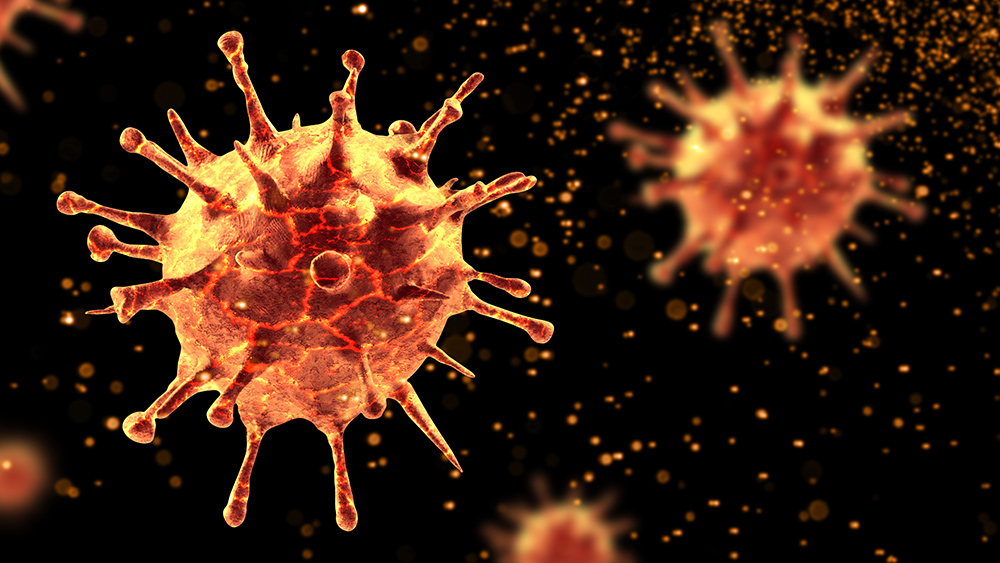CDC adds 6 new possible symptoms of coronavirus to its list
04/28/2020 / By Ralph Flores

The Centers for Disease Control and Prevention (CDC) has updated its guidance for COVID-19, the disease caused by the SARS-CoV-2 virus, to include six potential symptoms. Prior to the announcement, the agency had only three listed as official symptoms of COVID-19: fever, cough and shortness of breath.
The new symptoms, which were added on Sunday, include:
- Chills
- Repeated shaking with chills
- Muscle pain
- Headache
- Sore throat
- New loss of taste or smell
In addition, the agency updated “shortness of breath” – one of the hallmark symptoms for COVID-19 – to include breathing difficulties.
The updated list is important for the public, as most testing sites require a person to have a COVID-19 symptom before he is tested.
The coronavirus has infected 965,910 people in the U.S. and caused 54,876 deaths as of Sunday, according to data from Johns Hopkins University. COVID-19 affects people in different ways. While some show only mild symptoms, others get life-threatening complications. Health experts warn, however, that people with COVID-19 are likely to be most infectious days or weeks before they exhibit any symptoms. (Related: Study: Nearly 8 out of 10 coronavirus patients in China caught it from someone with NO symptoms.)
While the CDC did not update its list of emergency symptoms, it did recommend seeking immediate medical attention for the following:
- Trouble breathing
- Persistent pain or pressure in the chest
- New confusion or inability to arouse
- Bluish lips or face
Listen below as Mike Adams, the Health Ranger, talks about how the coronavirus is up to 100 times deadlier than the regular flu:
Learning more about the coronavirus
The coronavirus has been on a warpath against the rest of the world over the past few months, infecting nearly 3 million people and causing over 200,000 deaths worldwide. In the early stages of the pandemic, the CDC revealed that the hallmark symptoms of COVID-19 include fever, cough and shortness of breath.
Since then, researchers have uncovered more COVID-19 symptoms. A study from the University of California, San Diego was the first to report that loss of smell (anosmia) and loss of taste (ageusia) are potential symptoms of COVID-19.
In another report, researchers looked at medical records of COVID-19 patients in Wuhan – the Chinese city where the pandemic originated – and found that around 50 percent reported at least one digestive symptom.
Researchers also found a more recent phenomenon, which they dubbed “COVID toes.”
“They are purple lesions (very similar to those of chickenpox, measles or chilblains) which usually appear on the toes and normally heal without leaving a mark,” Spanish health authorities said in an official statement.
In a report by the International Federation of Podiatrists, experts discussed the case of a 13-year old boy from Italy who first complained of foot sores. The symptoms then progressed to fever, muscle pain and intense itching of the foot lesions.
Doctors from Mount Sinai Hospital in New York have also reported that in younger adults, the coronavirus causes sudden strokes, which could be a result of blood clotting issues.
“The virus seems to be causing increased clotting in the large arteries, leading to severe stroke,” explained Dr. Thomas Oxley, a neurosurgeon at Mount Sinai. “Our report shows a sevenfold increase in incidence of sudden stroke in young patients during the past two weeks. Most of these patients have no past medical history and were at home with either mild symptoms (or in two cases, no symptoms) of COVID.”
Learn more about the ongoing coronavirus pandemic at Pandemic.news.
Sources include:
Tagged Under: CDC, China, coronavirus, coronavirus symptoms, Cough, covid toes, covid-19, fever, Flu, foot lesions, infections, infectious disease, loss of smell, loss of taste, outbreak, pandemic, shortness of breath, stroke, superbugs, symptoms, viral infection, virus


















